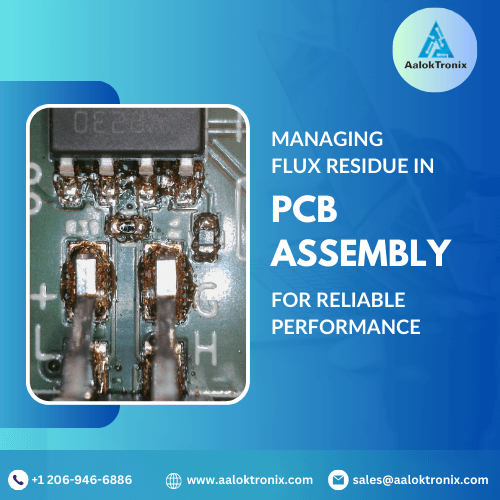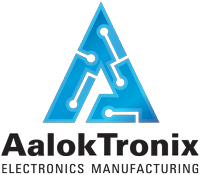Flux residue, a common concern in PCB assembly, refers to the residual flux material left behind after the soldering process, which can lead to electrical malfunctions and potential long-term reliability issues.
Understanding the root causes, potential effects, and effective cleaning techniques for managing flux residue is crucial for maintaining the integrity and functionality of printed circuit boards.
In this comprehensive exploration, we will delve into the underlying causes of flux residue, analyze its potential impacts on PCBs, and provide practical strategies and best practices for preventing and addressing flux residue challenges in PCB assembly.

Causes of Flux Residue:
Flux residue can arise from various factors, including the incomplete activation of the flux during the soldering process, the use of excessive flux material, or inadequate cleaning procedures after soldering.
Factors such as improper flux application, suboptimal reflow profiles, or the presence of impurities in the soldering materials can contribute to the accumulation of flux residue, leading to potential electrical shorts, signal interference, or corrosion-related issues within the PCB assembly.
Impacts of Flux Residue on PCBs:
The presence of flux residue can have significant implications on the functionality and longevity of PCBs, particularly in terms of electrical conductivity and signal integrity.
Flux residue can lead to increased electrical resistance, signal attenuation, or potential circuit failures, jeopardizing the overall performance and reliability of the PCB assembly.
Furthermore, the accumulation of flux residue can contribute to the degradation of the PCB’s mechanical stability, leading to poor shock and vibration resistance, increased susceptibility to environmental factors, and potential operational failures during the device’s lifecycle.
Identifying Flux Residue:
Identifying flux residue requires a comprehensive visual inspection of the soldered joints and the PCB assembly, focusing on the presence of visible residues or discoloration on the soldered surfaces and the surrounding areas.
Flux residues typically exhibit the presence of greasy or sticky residues, discoloration, or irregular surface textures, indicating potential flux residue accumulation and the need for thorough cleaning procedures.
Utilizing magnification tools, such as magnifying lenses or digital microscopes, can aid in the accurate identification and assessment of flux residue during the inspection process.
Best Practices for Managing Flux Residue:
To manage the risks of flux residue and ensure residue-free soldering in PCB assembly, implementing targeted best practices and cleaning techniques is crucial throughout the soldering and assembly processes.
Utilizing low-residue flux materials and incorporating no-clean flux formulations compatible with the PCB and component specifications can aid in minimizing the residue formation and promoting clean solder joints.
Implementing optimized reflow profiles and adhering to recommended reflow temperature settings specified by the flux and solder manufacturers can aid in achieving the complete activation and evaporation of the flux materials, minimizing the residual flux content and facilitating easier post-soldering cleaning procedures.
Implementing thorough cleaning protocols, such as the use of appropriate cleaning agents, ionic contamination testing, and controlled cleaning equipment, can aid in the effective removal of flux residues and the preservation of the PCB’s electrical and mechanical integrity.
Conducting regular cleanliness inspections and performance testing to assess the effectiveness of the cleaning procedures and the residual flux content on the PCB surface can further enhance the detection and prevention of flux residue-related issues, ensuring the production of high-quality, residue-free PCB assemblies and electronic products.
Conclusion:
In conclusion, comprehensively understanding the challenges of flux residue in PCB assembly is pivotal for ensuring the reliability and performance of electronic devices and systems. By addressing the root causes, assessing the implications, and adopting best practices and cleaning techniques, manufacturers and electronics enthusiasts can significantly enhance the soldering quality and cleanliness of their PCB assemblies, contributing to the development of robust, high-functioning electronic applications and technologies.
